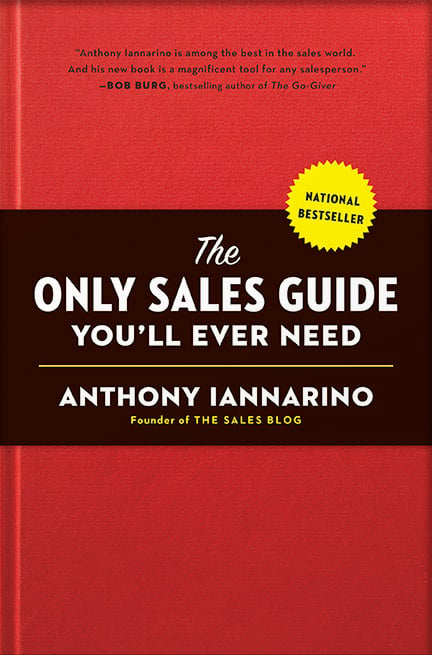The Gist:
- There are certain variables within the sales conversation. How you handle these variables can influence how well you can create value within the conversation.
- The variables from the client’s own challenges, assumptions, compulsion to change, experience, and team alignment are mirrored in the variables of how the sales rep handles those within the conversation.
- Time spent addressing how to handle each of these variables will improve a salesperson’s competency and effectiveness.
Certain variables have a high impact on the sales conversation. These variables exist on a continuum, with clients and salespeople occupying a place somewhere between the two poles, even though I assign them one role or the other here to help tease apart the differences. You find clients somewhere along the spectrum of states, while your clients likewise find you wherever you happen to be located, whether that helps them or causes them to look elsewhere for assistance.

The Client’s Challenge
One of the variables in the sales conversation is the nature of the client’s challenge. This is a tricky topic to explore because some clients present challenges in a way that masks the root cause and true nature of the challenge. Certain terms or entire topics may be verboten to mention out loud, even though everyone is aware of the challenge.
A poorly performing team may lack the skills and competencies necessary to generate the results for which they are responsible. But it might also be that the team is poorly led or that they work in a culture that prevents their success. More specifically, the problem might be a leader who refuses to change because they are only comfortable doing things the way they were taught, refusing any improvement that would conflict with what they believe to be the One Right Way.
In some cases, you may find a group of people who don’t believe that their problem is a problem at all. You take your clients where you find them, and not all clients will make it easy to understand which problem you really need to solve.
The Salesperson’s Ability to Explain the Cause of the Challenge
A salesperson who is using a legacy sales approach might essentially ask their client “what’s keeping you up at night?” as a way to identify their “hot button,” their “pain point,” or the source of their “dissatisfaction.” A salesperson with a better, more modern sales approach would not only sniff out the real nature of the client’s challenge, but also its source—even when it requires a high level of diplomacy and a bit of misdirection.
One of the variables to success in the sales conversation is found in the salesperson’s ability to be an “explainer,” the person who helps their contacts understand why they are struggling and provides them with a higher-resolution lens through which to see their world. A salesperson who knows little and understands less is useless when it comes to creating value for their clients.
The Client’s Assumptions
Your prospective clients have gained knowledge and experience over time, both of which provide them with a set of assumptions they use to make decisions. Over time, assumptions that may have been consistently correct and reliable start to degrade, losing their efficacy. Some assumptions are stickier and more stubborn than others, and many are deeply entrenched.
It is also possible that your clients have recognized that their beliefs have run smack into their reality and their waning results—like Wile E. Coyote hitting a painted-on tunnel—wiping out their assumptions and leaving them looking for a better understanding. Your contacts may have already started to adopt a new set of assumptions and need help fleshing them out.
The Salesperson’s Ability to Provide Context and Better Assumptions
Another variable worth looking at is the consultative salesperson’s ability to provide their prospective clients with the context necessary to remove, replace, or reshape the assumptions that are false, outdated, or incorrect. To reach potentially better decisions and better results, the prospective client needs to start with a set of assumptions that enable those outcomes.
Salespeople who can’t recognize a client’s assumptions or who fail to elicit them often find themselves struggling to help the client understand why they have the challenges they have, and will often face the difficult problem of helping them recognize the value of their insights and recommendations.

How Compelled is the Client?
It’s stunning how many sales organizations still assume that their clients are already compelled to change. Even when a company should be compelled to change, many refuse to acknowledge the facts when it means a significant change. You may be comfortable with the devil you know, having lived with him for a long time and learned how to manage his mischief. But the devil you don’t know is much scarier, mainly because you have no idea what kind of mayhem he might bring upon you.
One of the critical variables in the sales conversation is how compelled to change the client is when you first engage with them. Some portion of the companies you call on may be ready to go, while others will believe their results are already exceptional. Where you find your contacts has a lot do with how you approach them.
The Salesperson’s Ability to Respond Appropriately to the Client’s State
One of the things that makes one a trusted advisor is their ability to help people make the necessary decisions to avoid future harm, rather than just reacting to negative consequences. In large part, that is why you need to be able to recognize when a client is compelled to change and when it is your role to catalyze a proactive change initiative. You’re better off with a doctor that recommends lifestyle changes than one who tries to fix everything with surgery.
When a client is already compelled to change, you are still responsible for providing them the help they need to move from their current state to the better, future state they are trying to reach.

The Client’s Experience in the Domain
A client with an enormous amount of experience buying and using what you sell has what we might call “high domain experience” as a buyer. That doesn’t mean they know more than the salesperson helping them, and in fact it may make them a more engaged and cooperative client. But it can make them more difficult to help, in part because of their experience and their assumptions about the problem.
A contact with no experience may require more help understanding the decision they are making, analyzing the factors they should consider, and dialing in a solution they can actually execute. Their lack of knowledge and experience may make it simpler or more complicated to help them make the best decision for their business.
The Salesperson’s Experience in the Domain
Time spent in a domain influences the effectiveness of a sales professional. Over time, you start to recognize the patterns in a given vertical or client population. You also start to understand why clients make certain mistakes and how best to help them identify better choices. Expertise is only available to those who do the work long enough to gain situational knowledge and a very high level of competency.
A salesperson who lacks domain experience is going to struggle to create the same value as one with years in a domain. You would do well to acquire the knowledge and experience as quickly as you can, by learning from those who are a good number of chapters ahead of you and studying like crazy.

The Client’s Team’s Alignment
You will find groups of contacts that are aligned about a change initiative and others who are completely at odds over whether they even need to change. The sales conversation is easier—and often faster—if the client’s team is already aligned around the problem and a potential solution, and especially if they are willing to do the work to make a good decision for the company.
There is a naturally tendency for some groups to protect the status quo, especially when it means that change will be more difficult for their team or will rearrange someone’s place in the pecking order. Whatever the source of a lack of alignment, it does seem to make things more challenging.
The Salesperson’s Ability to Help Create Alignment
The competencies and skills necessary to succeed in B2B sales are increasingly more demanding, including the ability to help your clients build consensus. Helping your client gain alignment from their team is often required in large, complex deals. Your ability to help your clients with alignment is a variable to your success—and often, your client’s success.
An inability to contribute to alignment and consensus is one of the reasons many initiatives die, and the reason salespeople end up with a “no decision,” even if nobody actually rejects their plan.
Do Good Work
- Identify which variables are working within your own sales conversations.
- Ask yourself where you fall within the spectrum of states and how you can realign to become more effective.
- Identify your weakest variable and set aside time to improving that within your conversations.

Essential Reading!
Get my first book: The Only Sale Guide You'll Ever Need
"The USA Today bestseller by the star sales speaker and author of The Sales Blog that reveals how all salespeople can attain huge sales success through strategies backed by extensive research and experience."
Buy Now











.jpg?width=768&height=994&name=salescall-planner-ebook-v3-1-cover%20(1).jpg)


